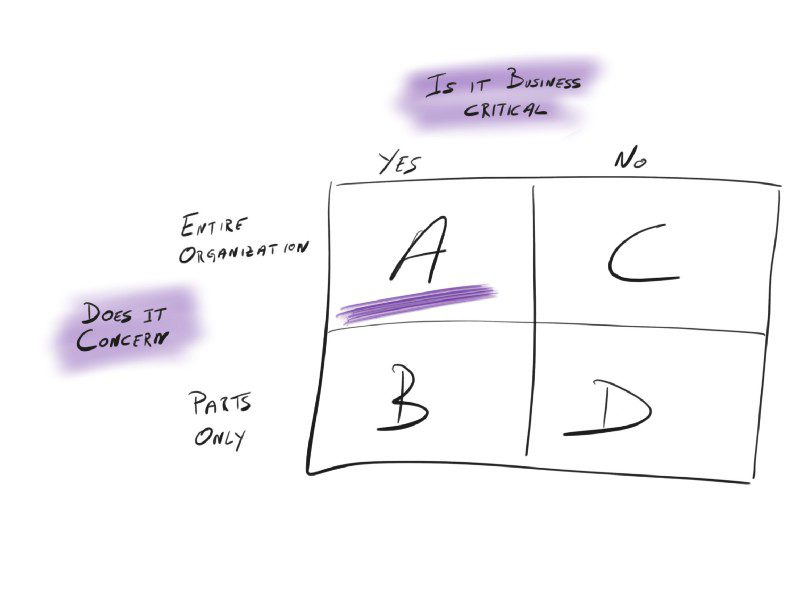Strategy triage: How to prioritize your strategic moves
The Strategic Priority Matrix
Friday, August 4, 2017
How to prioritize your strategic moves and business decisions.
During heated discussions in executive team meetings, it is sometimes difficult for everybody to stay focused on the stuff that really matters. At other times — especially if the executive team is new and maybe inexperienced with corporate-level strategy — every member likes to talk about her issues, and the conversations can quickly drift to day to day operational matters.
So how to focus on the big, important strategic, and critical issues?
A technique I borrowed and adapted from the Viennese System Thinkers Exner and Hochreiter is their prioritization model.
Here’s how it works.
The Strategic Priority Matrix
Step 1: Create a list of all the tasks, strategic initiatives, and moves, you have to implement, but also the key assumptions you need to validate and the strategic questions you need to answer.
Exner and Hochreiter also include “restrictions” into their list. In their experience, when creating your list you’re likely to have items that you can influence and items, which are external, and hence beyond your control. They call these items “restrictions”, and suggest deleting them from your list, yet think about whether they require tasks, which are to be included on your list.
Step 2: For each of these items on your list, think about:
- Does it impact the organization as a whole or only parts of it?
- Is the item business-critical, in other words, does it concern the short or long term survival of your organization?
Step 3: Assign the items to the following matrix.

Items in category A (concern the whole organization and are business-critical) have the highest priority, those in category D the lowest.
Step 4: Exner and Hochreiter propose to think about whether a task (1) can be completed using the standard procedures and routines of your organization, or whether (2) they require activities and initiatives outside of your established routines.
Activities, which can be handled using established routines should be delegated, those which require a different approach deserve special management attention and should not be delegated. Hence they have a higher priority.
Step 5: Get to work!

